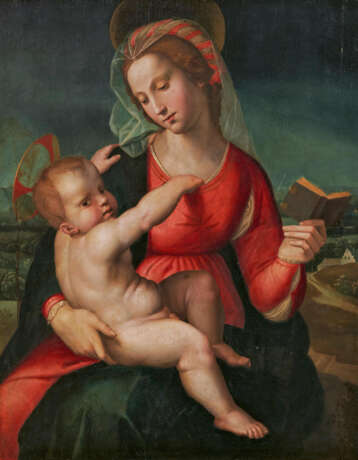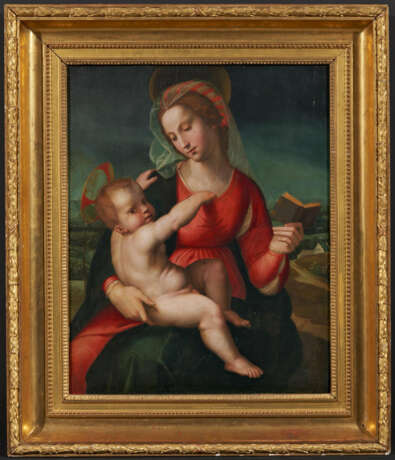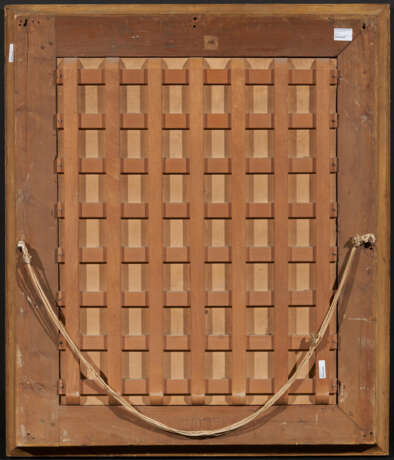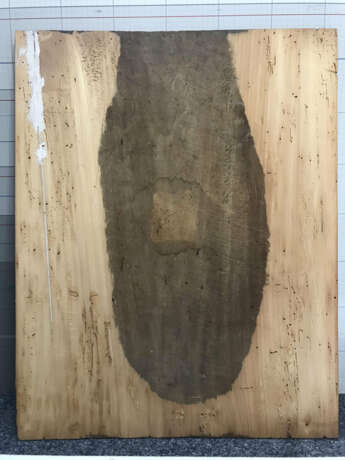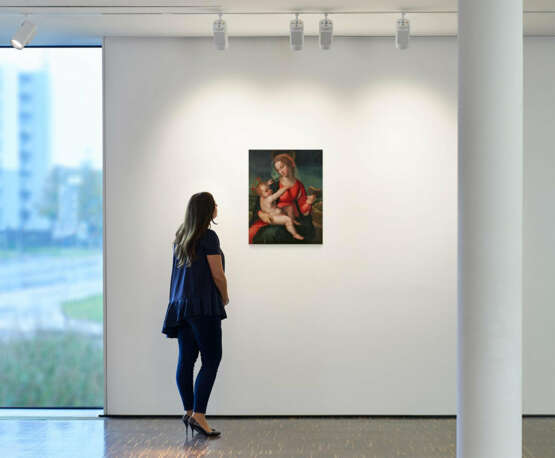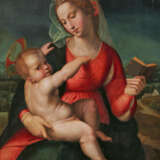ID 548747
Lot 910 | Madonna with Child
Estimate value
€ 35 000 – 60 000
Florence 1483 - Florence 1561
attributed
Title: Madonna with Child.
Technique: Oil on wood.
Mounting: Parquetted.
Measurement: 76 x 60cm.
Frame/Pedestal: Framed.
Provenance:
The painting is mentioned in the "Verzeichniss der gräflich von Eckartschen Malereiensammlung zu dem 2. Fideicomiß auf Leonberg" of 24 July 1826 under number 82 as "Eine Madonna mit dem Kind von Andreas del Sarto";
since then in family ownership.
Ridolfo Bigordi, known as Ridolfo del Ghirlandaio, was born in Florence in 1483 and received his artistic training from his uncle David, who was also an artist and brother of the more famous Domenico del Ghirlandaio. Very early on, the young Ridolfo excelled in painting. He quickly developed his skills and practised on cartoons by Michelangelo and Leonardo in the Palazzo Vecchio. He then became friends with Fra Bartolomeo and especially Raffaello "Raphael" Sanzio during his stay in Florence (ca. 1504-1508), so that the latter gave him one of his works intended for Sienese patrons to complete. According to some art historians, this can be identified with the "Madonna Colonna" (Berlin, Gemäldegalerie), according to others with the "Belle Jardinière" (Paris, Louvre).
Ridolfo's first secure work is the altarpiece with the Assumption of the Virgin, commissioned from him and his uncle David by Prato Cathedral in 1507, but certainly executed in its entirety by his nephew and completed in the spring of 1509. The first works clearly show a decisive inclination on the part of the artist towards the pictorial forms and elements of the 14th century. The increasing influence of Raphael can also be seen, especially in the style of colouring and drawing. The study of Raphael's works and the close relationship with him are also reflected in some portraits painted between the end of the first decade and the beginning of the second: The stylistic proximity is so great that some of Raphael's works were attributed to Ridolfo himself in the last century. In addition, reworkings or copies by Ridolfo of works executed by Raphael in the Florentine period are known, for example the "Madonna Colonna" mentioned above.
In 1513 Bigordi began his long and intensive activity for the Signoria of Florence: the artist was mainly commissioned as a decorator of numerous sets and stage designs for ceremonies and theatre performances on the occasion of solemn events connected with the life of the city. Until 1540, the artist expanded this activity with altarpieces and devotional paintings, probably with the help of a workshop.
In 1521 he executed the "Pietà with Saints Nicholas, John the Baptist, Jerome and Mary Magdalene" for Mario di Niccolò Beltramini in the church of Sant' Agostino in Colle Val d'Elsa. One of his greatest works, the "Enthroned Madonna with Saints" painted for San Pier Maggiore in Pistoia, dates from 1528.
According to the artist biographer Giorgio Vasari, the painter's activity became increasingly rare from the end of the fourth decade of the 16th century, due to an increase in ailments, mainly triggered by gout. Among his last decorations mentioned by Vasari are those in the monastery of Santa Maria degli Angeli.
The present work with the Madonna with Child on Her Lap, which for stylistic reasons fits into Ridolfo del Ghirlandaio's full heyday, is to be regarded as a painting with a devotional purpose, executed for a probably unknown Florentine patron. It appears to be the typical consequence of the influence of Raphael's art on Ridolfo del Ghirlandaio. The influence manifests itself both on the compositional and on the stylistic level. Here, too, Ridolfo took the "Madonna Colonna", which Raphael painted at the end of his stay in Florence, as a model. Bigordi was in a privileged position to study and copy the works of the Urbino artist, as he enjoyed his friendship and had the honour of completing one of Raphael's works from this period. The present painting, however, is not a 1:1 copy: Ridolfo adds some variations in the halos, the background and the Virgin's headdress to make the work, in a way, his own production. As for the style, the painter takes over from Raphael the warm and bright colours and the robust drawing, which - with the same effect as Raphael's - gives strength and delicacy to the figures.
The date of origin of this painting is probably around 1520-1525, as the work shows clear stylistic similarities with the above-mentioned "Pietà with Saints" of 1521, which can be found above all in the physiognomies of the figures and the landscape. Indeed, we find the same faces, made of a robust but at the same time delicate material, with large eyes and dark pupils. If we compare, for example, the face of the Madonna in this painting with that of Mary Magdalene - both in the same position - they seem to have sprung from the same model in mirror image. Her hands also seem to have come from the same brush, as do the eyes of the Child Jesus and Saint John. The same characteristic hands are found in both paintings, consisting of fingers with rectangular, superimposed phalanges.
We are grateful to Matteo Gianeselli, Paris, for confirming the attribution of the present painting on the basis of a high-resolution digital photograph.
| Artist: | Davide Ghirlandaio (1452 - 1525) |
|---|---|
| Applied technique: | Oil paint |
| Auction house category: | Old Masters |
| Artist: | Davide Ghirlandaio (1452 - 1525) |
|---|---|
| Applied technique: | Oil paint |
| Auction house category: | Old Masters |
| Address of auction |
VAN HAM Kunstauktionen GmbH Hitzelerstr. 2 50968 Köln Germany | ||||||||||||||
|---|---|---|---|---|---|---|---|---|---|---|---|---|---|---|---|
| Preview |
| ||||||||||||||
| Phone | +49 221 92586215 | ||||||||||||||
| Fax | +49 221 92 58 62 4 | ||||||||||||||
| Buyer Premium | 32% | ||||||||||||||
| Conditions of purchase | Conditions of purchase | ||||||||||||||
| Business hours | Business hours
|
